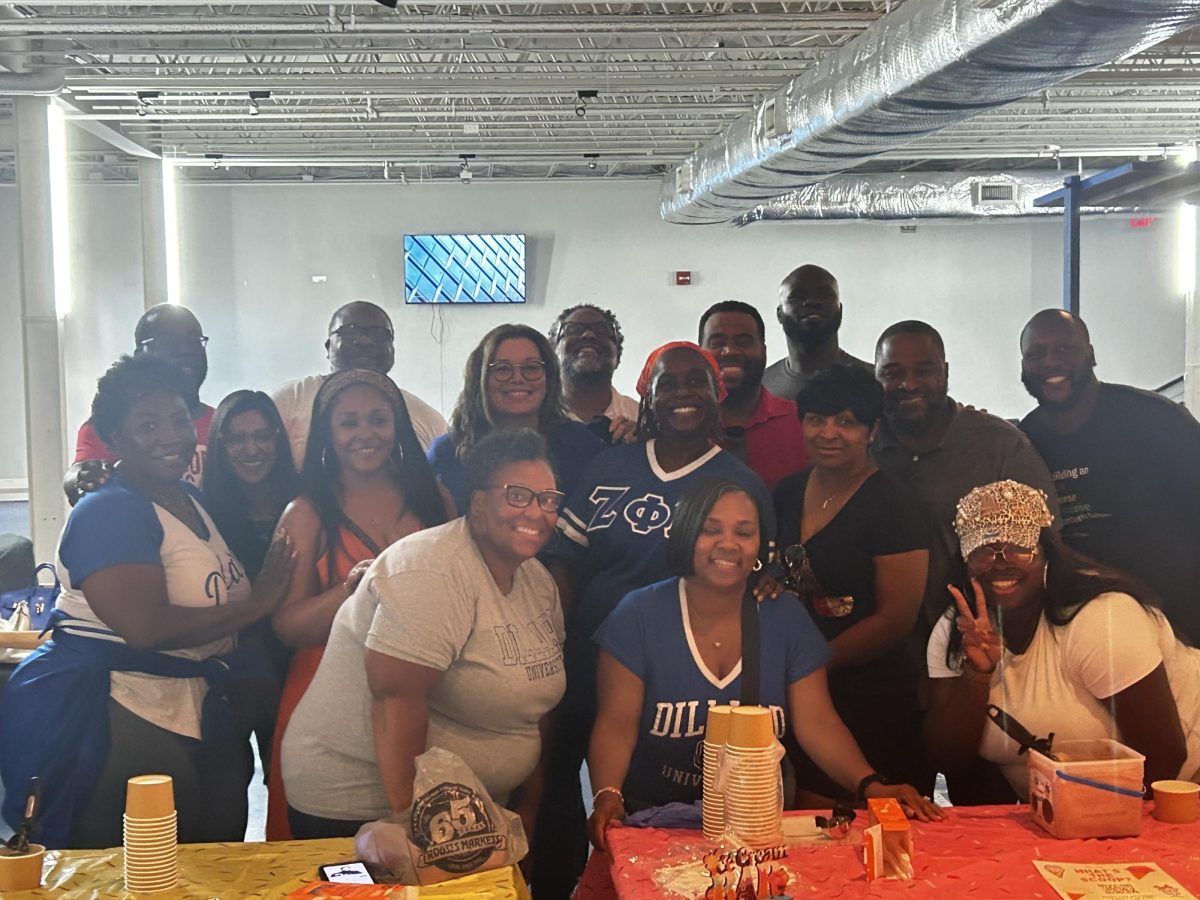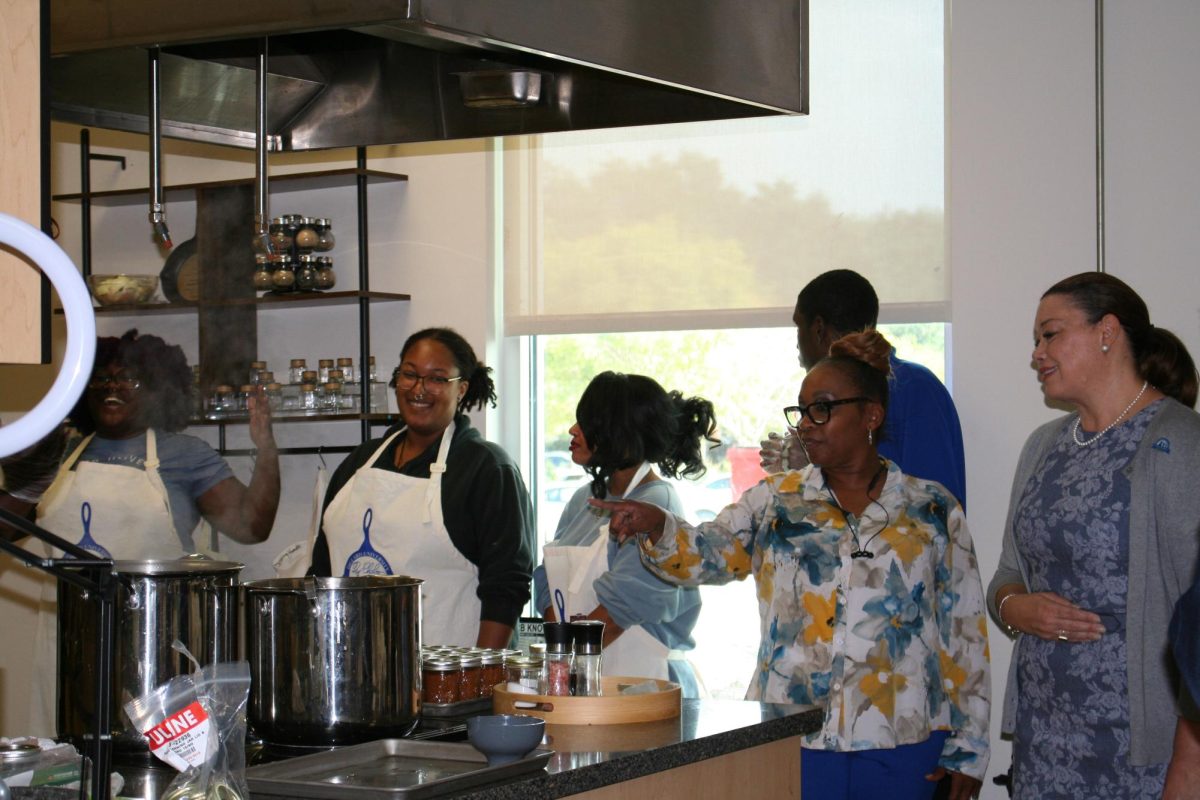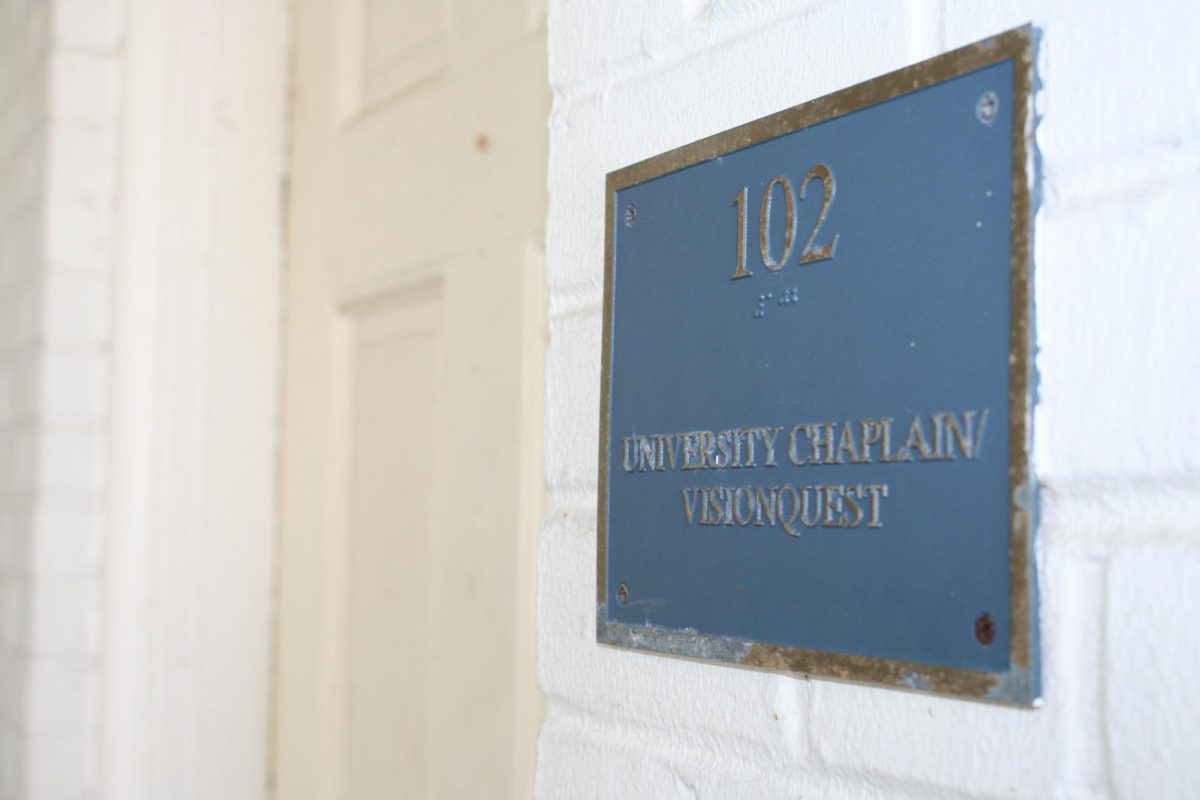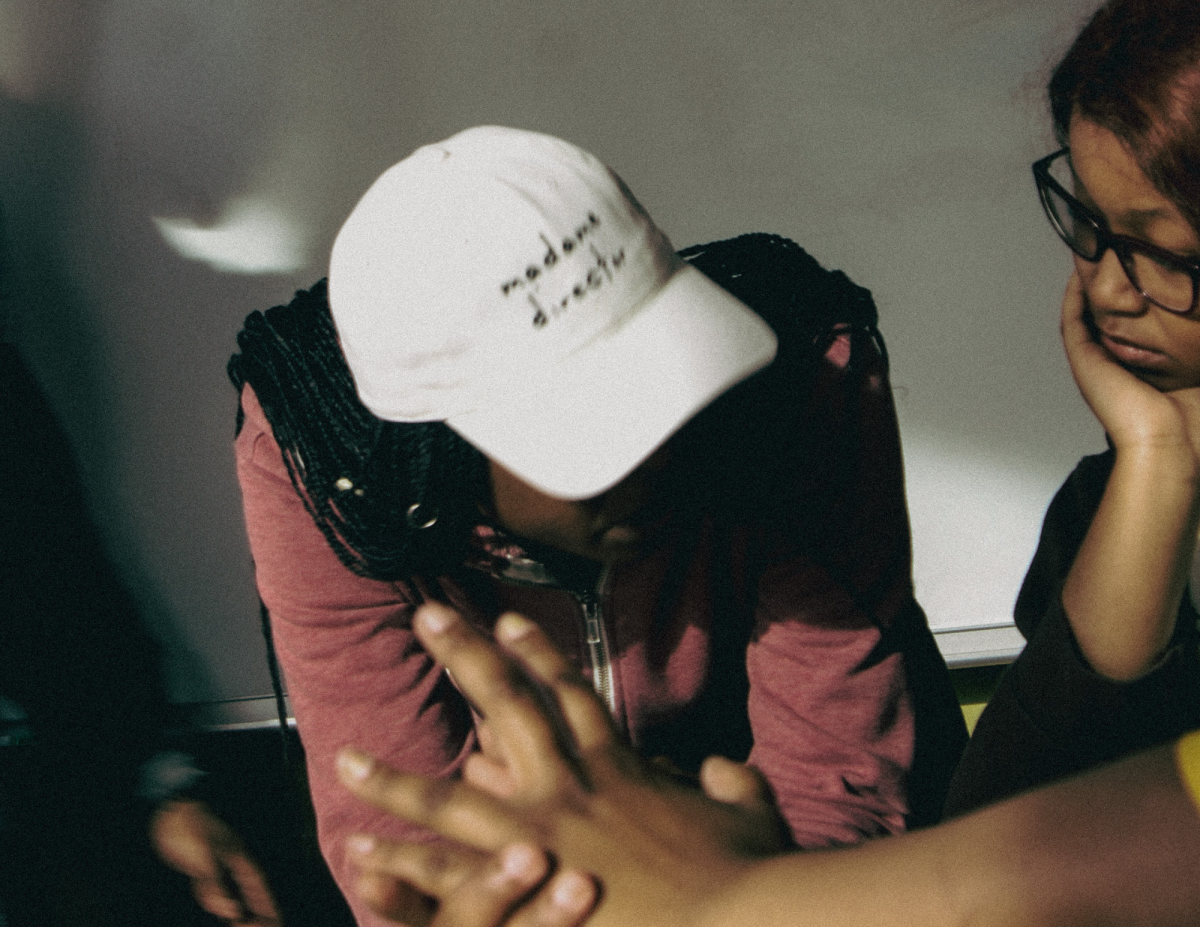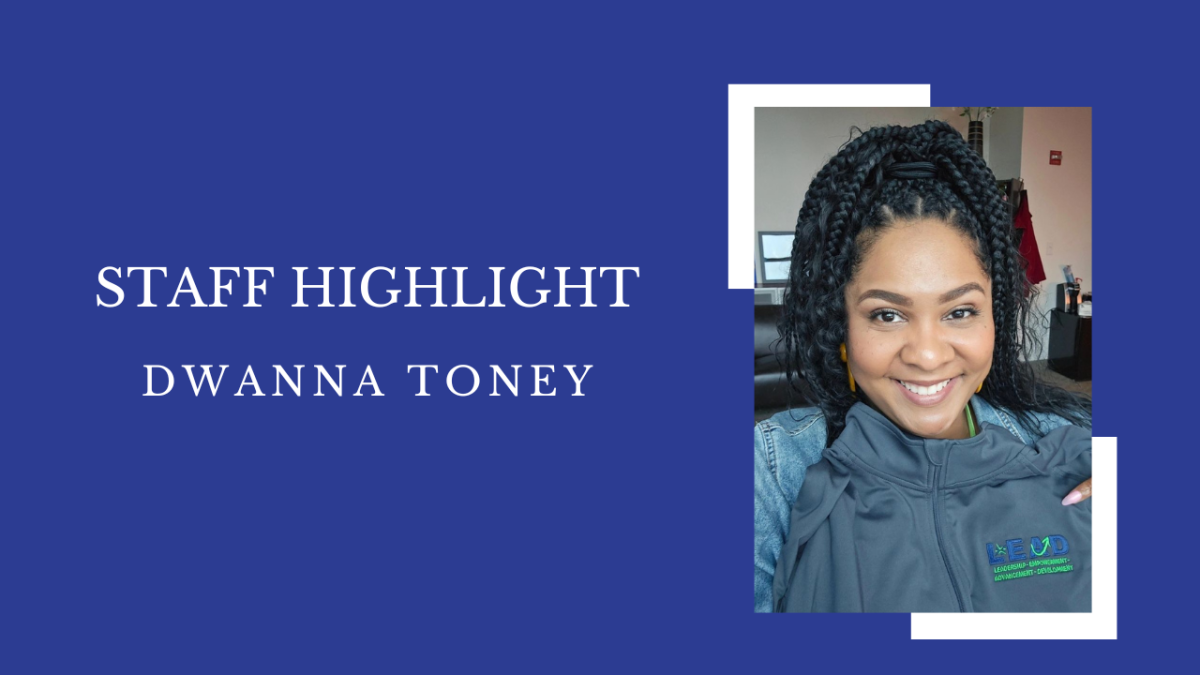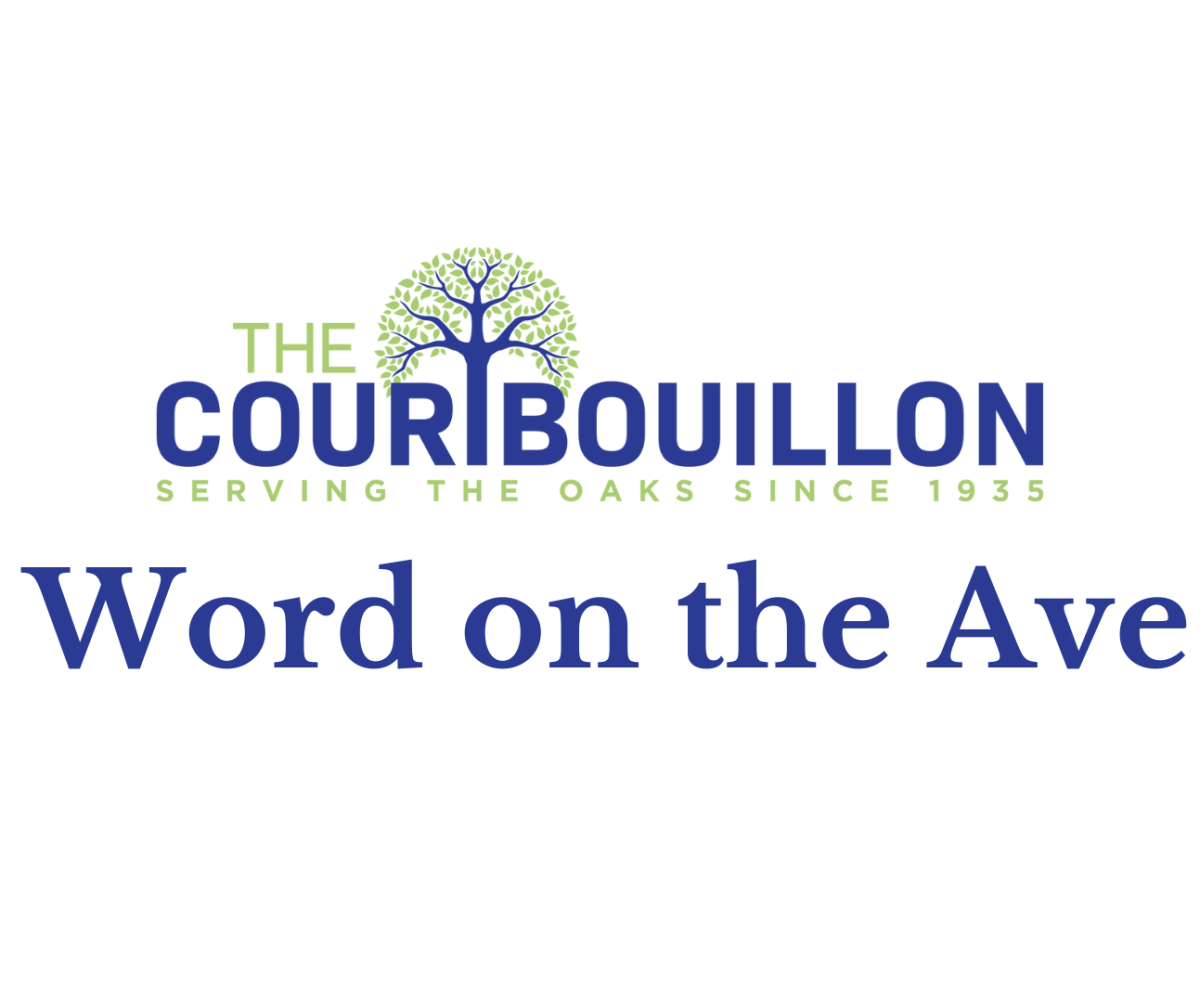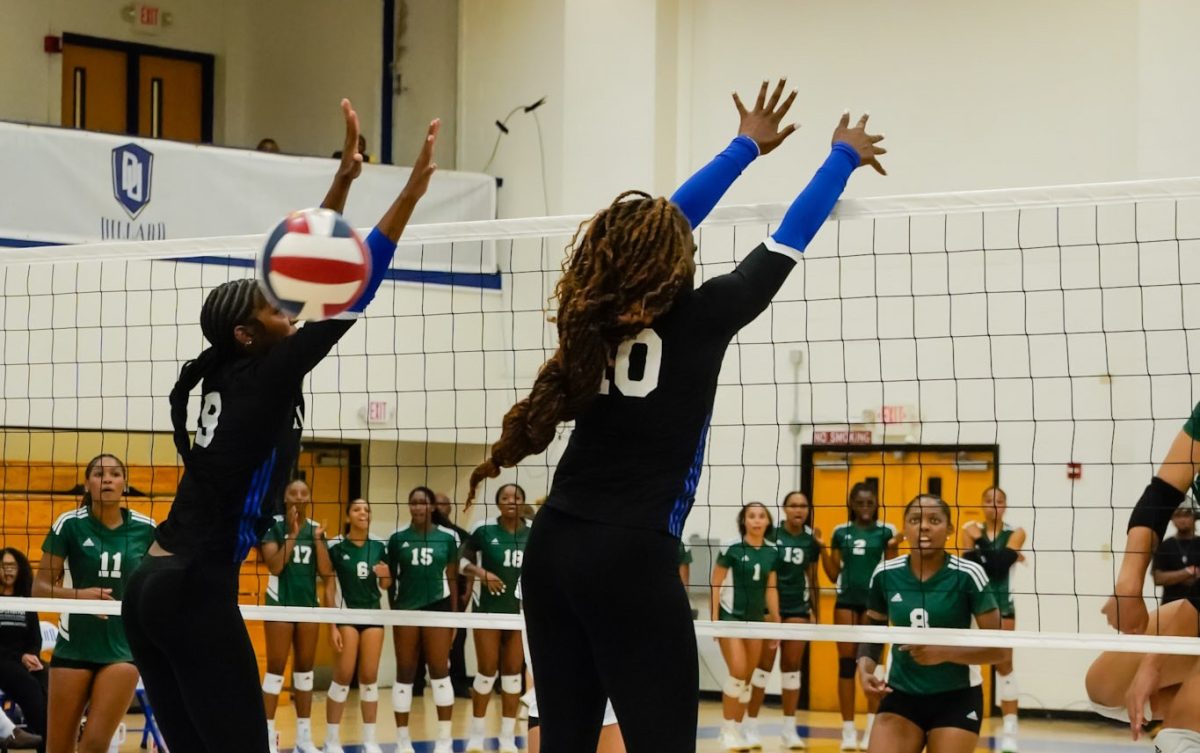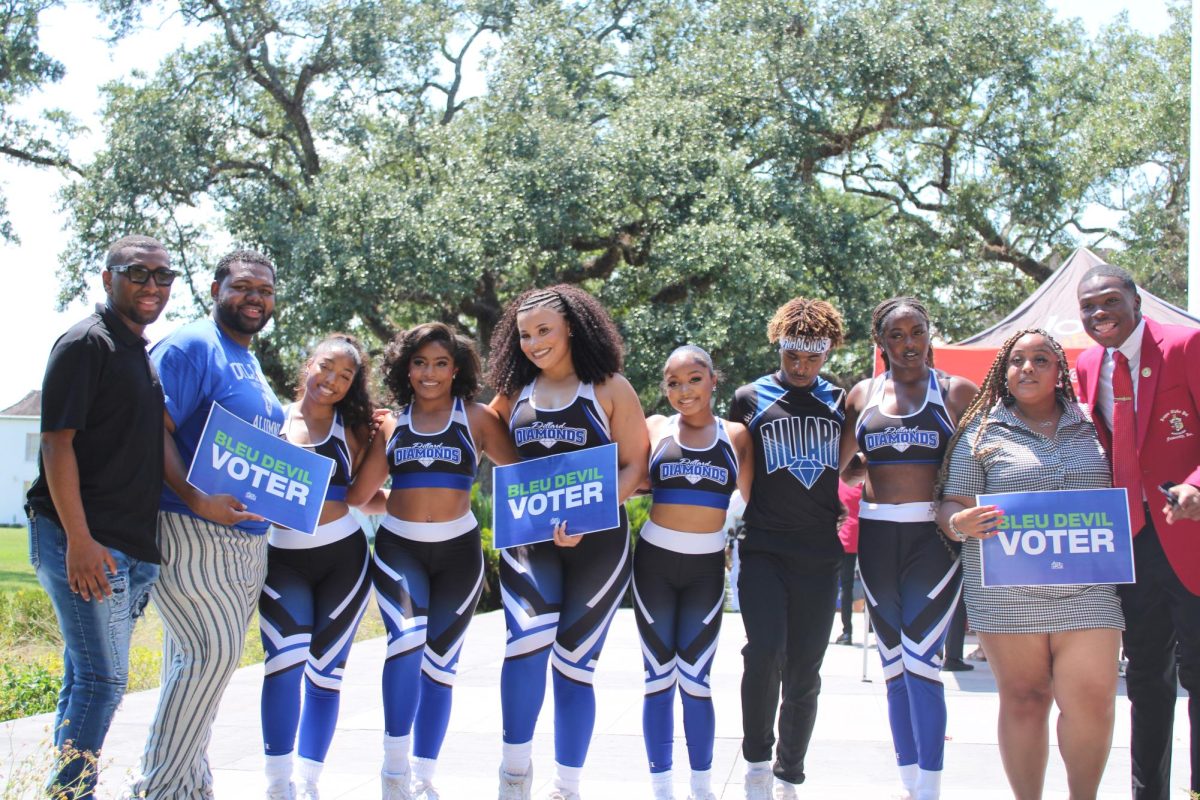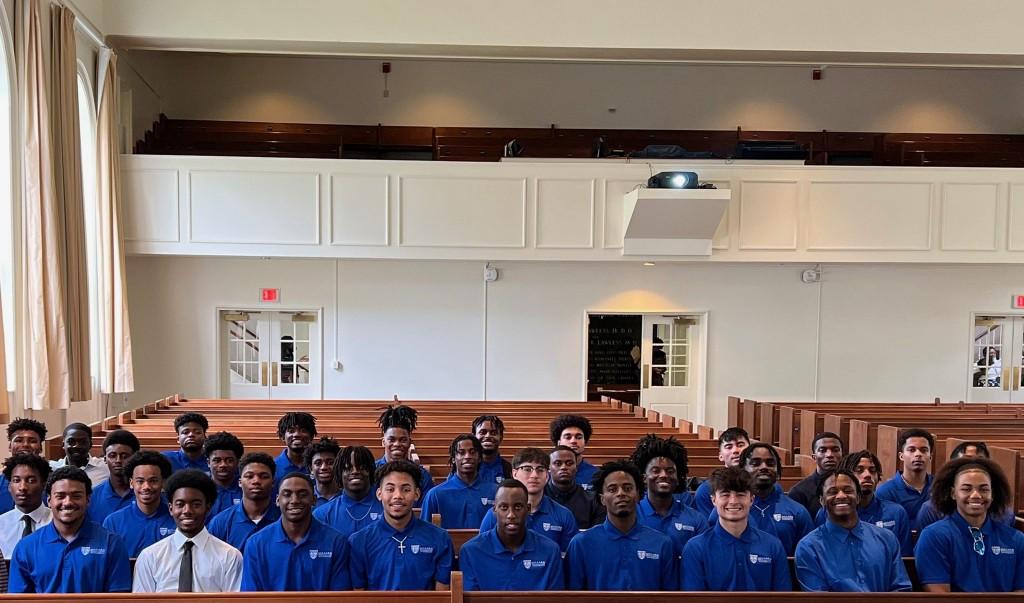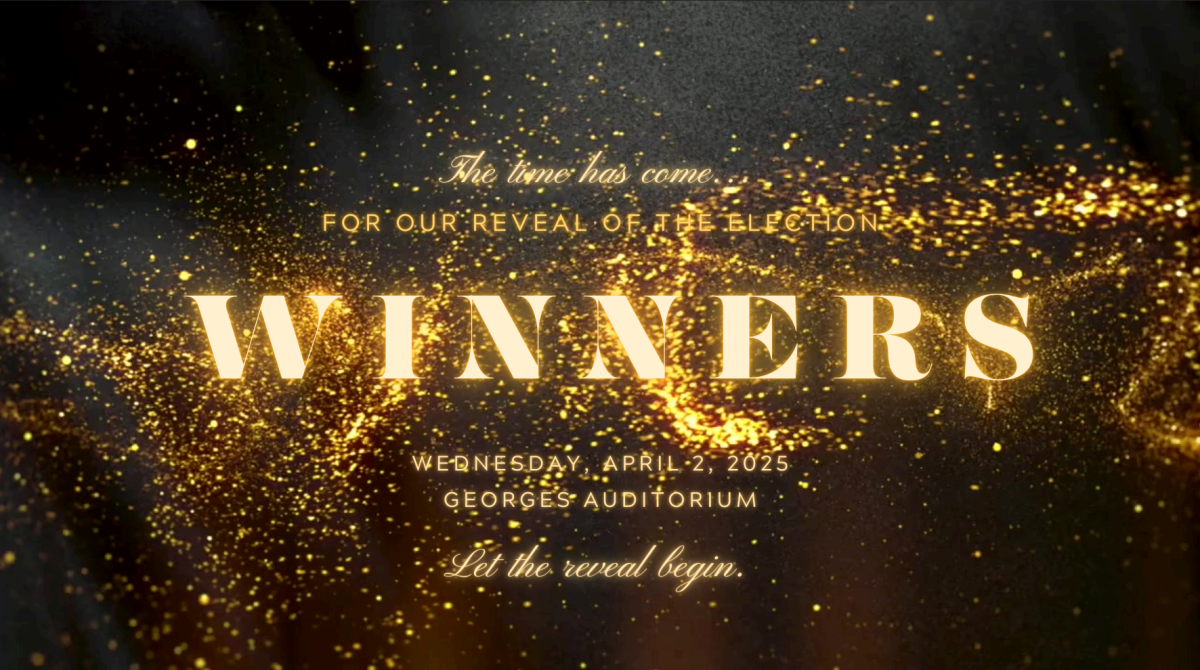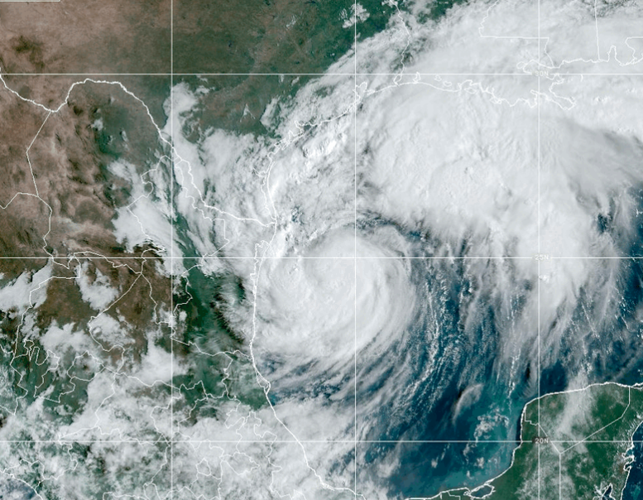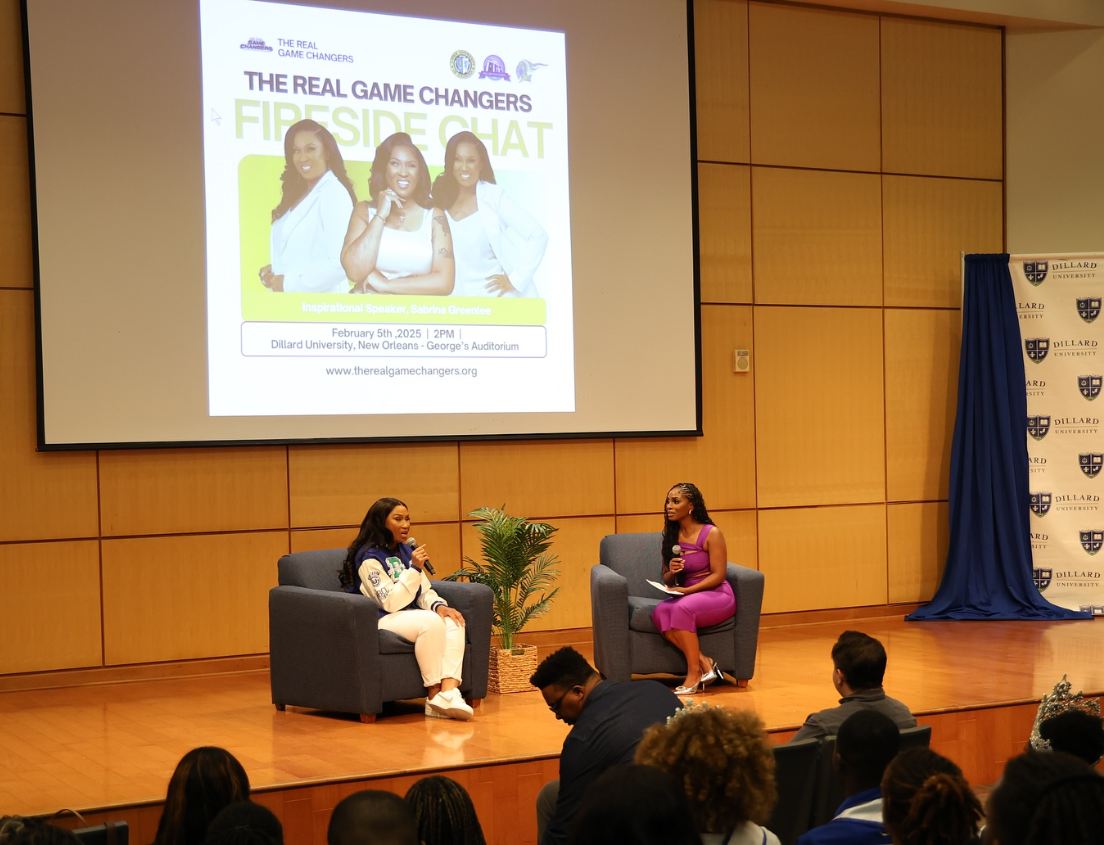
Photo provided by Johnny Jones/Zoe Pictures for the Courtbouillon
Members of the film crew, which included DU student volunteers from theatre and auxiliary services, pose for a group shot.
The production, which included performances by artist Lucky Daye and the New Orleans band Soul Rebels in Cook, will be published online Wednesday, Oct. 20.
Rather than focus on black history only in February during Black History Month, the New York Times followed the idea of author Toni Morrison and collector Middleton A. Harrison, who combined images, artifacts and documents reflecting what it meant to be black in America in their master work, “The Black Book,” published in 1974.
Willard Hill, the husband of episode producer/programmer Quan Lateef-Hill, suggested Dillard because of the huge influence Dillard had on his family. His grandmother, Gladys Jones-Hill graduated with the Class of 1936; she became head of the music program and helped found the Beta Gamma chapter of Delta Sigma Theta Sorority, Hill said.
His parents, Willard Hill Jr., a political science major, and Manuella Francois Hill, a music major, graduated in 1970 and 1967, respectively. Others in the family who attended DU include his aunts, Hill said.
In fact, the family was featured on the cover article of an old DU “Alumni Bulletin,” the precursor to the “Dillard Today” magazine.
Willard Hill is the original composer of the New Orleans rendition of “Lift Every Voice & Sing,” also known as the “Black National Anthem,” which was performed for the episode by artist Lucky Daye and the Soul Rebels.
New Orleans trumpet player Julian Gosin (Class of ’09) said he often comes back to Dillard to visit familiar faculty and staff.
Theater technology major Nailah Dabon, one of several student volunteers, said it “meant a lot to be around people that are in the industry.” She, too, has roots in New Orleans.
Some 15 stories in the series have been published to date at www.nytimes.com/interactive/2021/us/black-history-continued.html. In addition to a much-discussed segment on the Tulsa (Okla.) Race Massacre, segments have been done on black surfers; black food foragers; the Miss Juneteenth pageant; black hair; black superheroes; Harlem Renaissance artist Augusta Savage; black nerds; blacks in construction and fashion; and black history and heroes.
Lateef-Hill said, “We wanted to shine some light on Dillard because it isn’t really spoken about on the levels of Howard and Spellman.” She added it also was important to highlight New Orleans.
“What is home and how do we define it?” she asked. “Home is always changing for New Orleans.”

